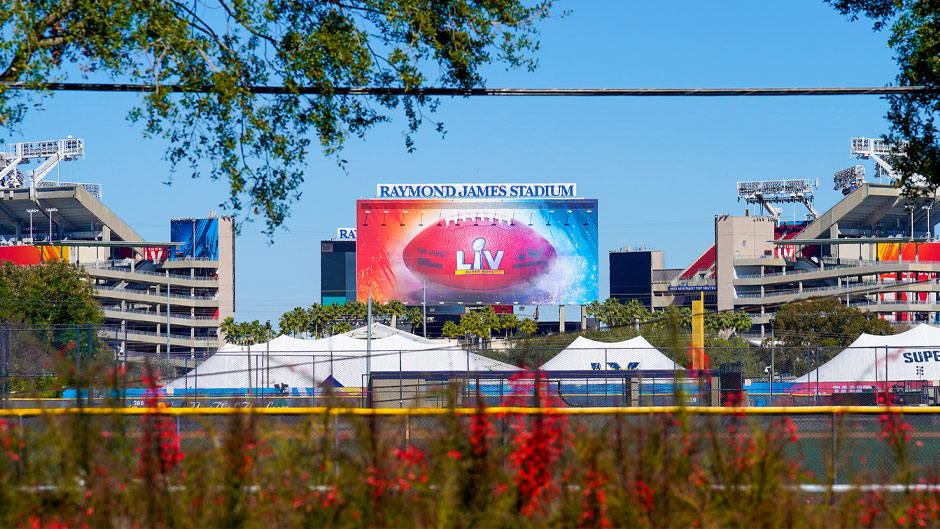It’s fourth down, a mile to go, and the clock is winding down—just 30 seconds to be exact. The challenge for advertisers of designing a winning ad for the Super Bowl—a 30-second spot with a $5.5 million price tag that will play to some 100 million viewers in 25 languages in 180 countries—has never been tougher, according to Claudia Townsend, an associate professor of marketing at the University of Miami Patti and Allan Herbert Business School.
Townsend highlighted that marketers target specific audiences with tailored messages. The Super Bowl is the colossal anomaly.

“What makes the Super Bowl so different is that it’s such a broad, generalized population sample—there are kids, grandparents, all diversities and wealth levels—so a brand is putting their message in front of a big audience that might not be their relevant audience,” Townsend noted. “You’re paying for all the eyeballs, but the eyeballs aren’t necessarily the eyeballs you want. There’s always a debate of whether it’s worth the price tag.”
The pandemic has uprooted every facet of our lives over the past year and left no industry unscathed.
“It’s a hard time to do advertising in general and particularly in the context of the Super Bowl,” Townsend pointed out. “Super Bowl ads are buzzworthy precisely because of their high price tag and that just looks bad right now.”
“Whether your company is doing well or not, there are so many people suffering right now—and the hospitality industry especially is really doing poorly,” Townsend continued. “So, Budweiser, Pepsi, and Coke are pulling out because for them to be spending this kind of money, even for a business expense, could be perceived as wasteful. It’s not good politics, and it just looks bad.”
These traditionally big Super Bowl advertisers are indeed opting to stay on the sidelines for this year’s big-ad game. And their decision seems to be scoring points.
“The very fact that these companies are not advertising during the Super Bowl is getting buzz, and it’s the right kind of buzz so they’re getting the benefits,” Townsend said, referencing Budweiser’s 90-second online spot that discusses its decision-making and the fact that it is putting that ad money toward coronavirus vaccine awareness programs.
Regardless of the challenge, the ad prices for the game this year have not been reduced and they sold out, she noted.
Traditionally Super Bowl ads do well for one of two reasons, either they use humor or they tug at feelings—maybe grief or longing—and they make an emotional connection with the viewer, according to Townsend.
“More broadly, we talk about an ad creating an experience—no one’s buying a Coke because of the flavor,” she said. “Instead, it’s the experience about being on the beach with friends, that’s what products market and that’s what we buy.”
Those traditionally effective threads are especially prone to unravel this year.
“On one hand, going with humor may not seem appropriate in a time when there are hundreds of thousands of deaths in the country; and while having that lighter tone oftentimes works, it may not be the best thing this year,” she said, adding that “on the flip side, going with more of the emotion appeal again may seem inappropriate—it might seem that you’re taking advantage of the situation and of peoples’ negative emotions.”
Townsend referenced one of most popular Super Bowl LIV (2020) commercials, Google’s “Loretta” ad of an elderly man recalling what he loved about his wife, whose passing is insinuated.
“You can’t do that this year, it’s a very sad ad that hits too close to home,” she said. “This year, that’s someone’s grandparent.”
So, what’s to gain then from paying the big-sticker price to air a Super Bowl ad?
Townsend explained that the ad itself is part of a comprehensive marketing strategy.
“There’s reason to believe that the ad helps with investor relations. The fact that you’re advertising for the Super Bowl positions you as a strong company, and that might help stock prices for a publicly traded company,” she said.
Another benefit has to do with the fact that now Super Bowl ads are released ahead of time (they are posted as released on Ad Age).
“That’s as valuable than the actual ad during the game. Because by the time of the Super Bowl, many people have seen it, articles have been written about it, and people have discussed it—that level of brand awareness may have a positive effect,” she explained.
Townsend noted that the pandemic has accelerated changes that were already underway in the advertising world as it has in so many other industries.
“More people at home, more people online—COVID has sped up everything by seven years or more,” she said. “In terms of digital adoption, one thing we’re seeing is that advertising is increasingly multiscreen. When watching a Super Bowl ad, they’re expecting that you’ve got a second screen open and that you’re engaging with the brand on one platform—reading their tweet or visiting their website to see the product—while you’re watching it on another.”
This second screen is helping to provide actual data that was more abstract in the past.
“It used to be that there was a lag effect on sales—no one sees a car commercial and goes out the next day and buys a car,” Townsend pointed out. “Now they might put a hashtag on an ad, and you can see who’s using that hashtag. You can see the social media mentions and the click-throughs on the website, and you can do a language analysis to see if there were positive or negative words associated with it or other particular emotions.
“That second screen has made it very clear what’s going on in a more immediate way,” she continued. “It might be that the initial goal of a campaign isn’t sales but to get social media following, to get people engaged with the campaign in some way so that down the line it will lead to sales.”
Ultimately, whether a Super Bowl commercial flips in the end zone with a score or flops on the field is all about tone.
“Acknowledging the situation and responding to it can be good, but you do not want to be seen as taking advantage of the situation or responding to it inappropriately,” Townsend remarked, referencing a Pepsi ad a few years ago that attempted to celebrate the Black Lives Matter movement.
“It [depicted] a racial protest looking like a parade—it bombed. And they ended up apologizing,” Townsend pointed out. “With these types of ads, if you can do it right, it’s great. But it’s very easy to not do it well.”

